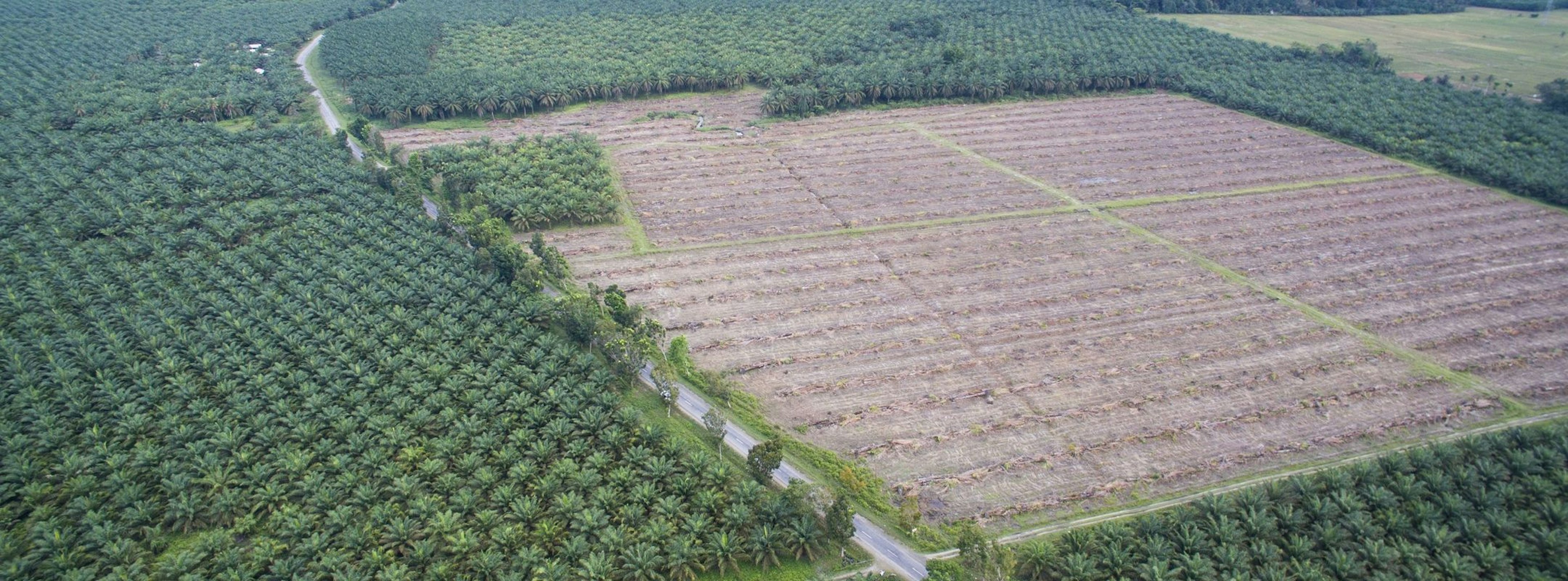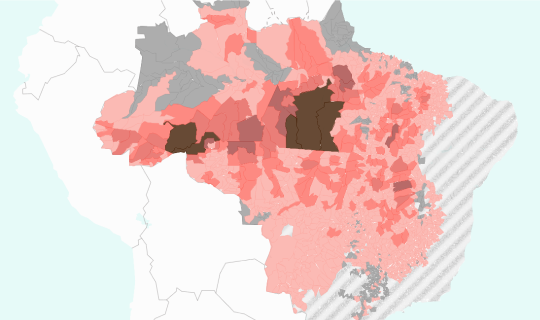A guest post by Guido Rutten and Willem Klaassens, SourceUp
The ability of companies to track their supply chains is growing at speed. There are clear imperatives: in the agricultural and forest sectors, both net-zero carbon targets and regulatory due diligence requirements are pushing companies to better understand their supply chains.
Technology is improving all the time. Traceability systems can help monitor goods flowing through direct supply chains. For more complex commodity value chains such as soy and palm oil, where products from different sources are mixed, more flexible solutions are emerging that balance detail and scale.
Trase supply chain mapping data enables buyers and financiers in agricultural commodities trades to get a good understanding of their exposure to different regions, even if physically segregating different material flows is too costly (see figure).
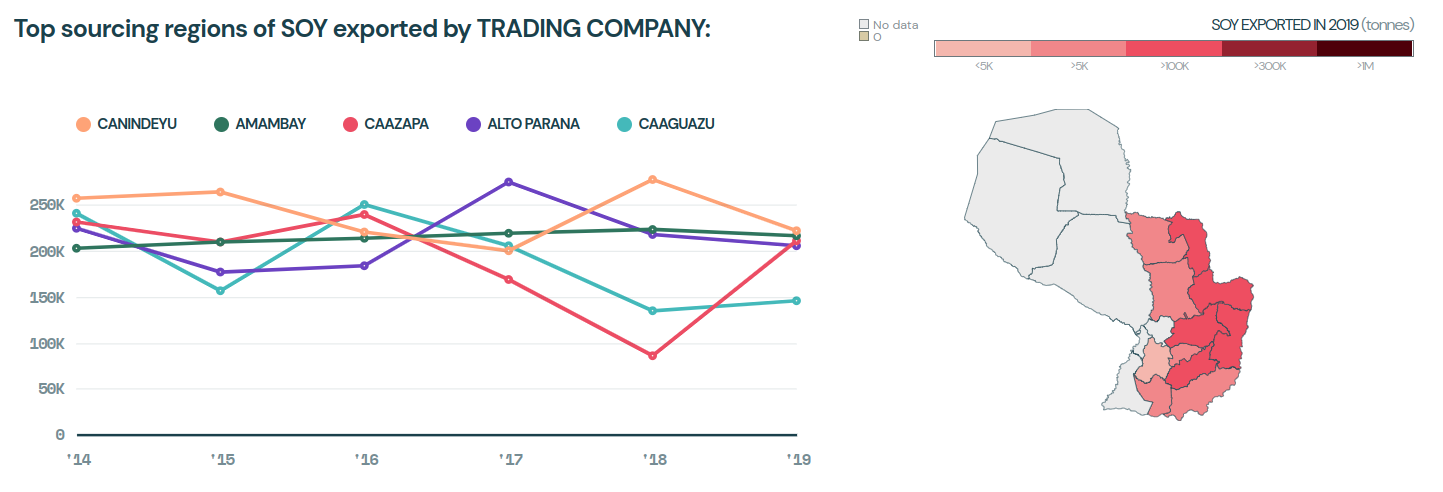
Designing an effective engagement strategy
But once you know who and where you source from, what’s next? As a sourcing company, how can you deliver on your supply chain sustainability commitments like net-zero carbon, forest positive and people positive?
The first step is to talk to suppliers. Individual supplier engagement and certification schemes are critical and have proven their worth, but they have limitations. They work well to nudge individual producers to adopt sustainable practices, but struggle to address and resolve systemic issues such as deforestation or human rights abuses. Moreover, they inherently work much better for large producers than for smallholders.
Zooming out, supply chain sustainability debates often involve entire regions. Cases in point are soy and beef from the Cerrado in Brazil, palm oil from Aceh in Indonesia, or cocoa from Côte d’Ivoire. But how do you start addressing such far-reaching sustainability issues in a meaningful way? How can you turn risk hotspots into sustainability sweet spots?
Simply moving away does not solve the problem. While boycotts, moratoria and divestment have an important role to play, they can only work if they have strong local regulatory support or if they cover enough of the demand market to reverberate on the supply side – and even then they may simply shift undesirable activity elsewhere. Moreover, sustainability risks are often spread over large regions, and such indiscriminate action is likely to have serious negative consequences.
The benefits of taking a landscape approach
Some in the agriculture and food sector recognise this issue. Over the past decade, landscape and jurisdictional initiatives have become part of the sustainable sourcing toolkit.
Simply put, landscape initiatives seek to bring together multiple stakeholders in a producing region to jointly address sustainability issues. They can cover very large areas such as the ‘Produce, Conserve, Include’ initiative which covers Mato Grosso, the third-largest state of Brazil, but they can also start small, like an initiative covering coffee producing regions in Vietnam’s central highlands which aims to grow from 19,000 hectares in 2021 to 110,000 ha in 2025, increasing the number of farmers from 15,000 to 85,000.
These initiatives can have real impact at scale. In the Vietnamese example, water use was reduced by 20% and chemical fertilizer use by 14%, while increasing farmer income by 20%.

Participants of the landscape initiative in the Vietnamese Central Highlands. Source: IDH
The number of companies supporting landscape initiatives is increasing. The Consumer Goods Forum’s Forest Positive Coalition, a group of 21 major consumer goods companies jointly representing US$1.8 trillion in market value, is aiming to support landscape initiatives covering its supplies of soy and palm oil by 2024. This should create a substantial demand for credible landscape initiatives.
SourceUp and Trase working together
How does this translate into a clear and actionable market signal? How can a region put itself on the map as a sustainability leader, and what kind of support can it get in doing so?
This is where SourceUp comes in – an independent platform designed to make it easier for companies sourcing agricultural commodities to work together with landscape initiatives to boost sustainability in the producing regions. SourceUp provides step-by-step guidance to grow and eventually become recognised as verified sourcing areas. SourceUp was developed by a group of over 15 companies, non-profit organizations (including Trase) and government representatives led by sustainable trade initiative IDH.
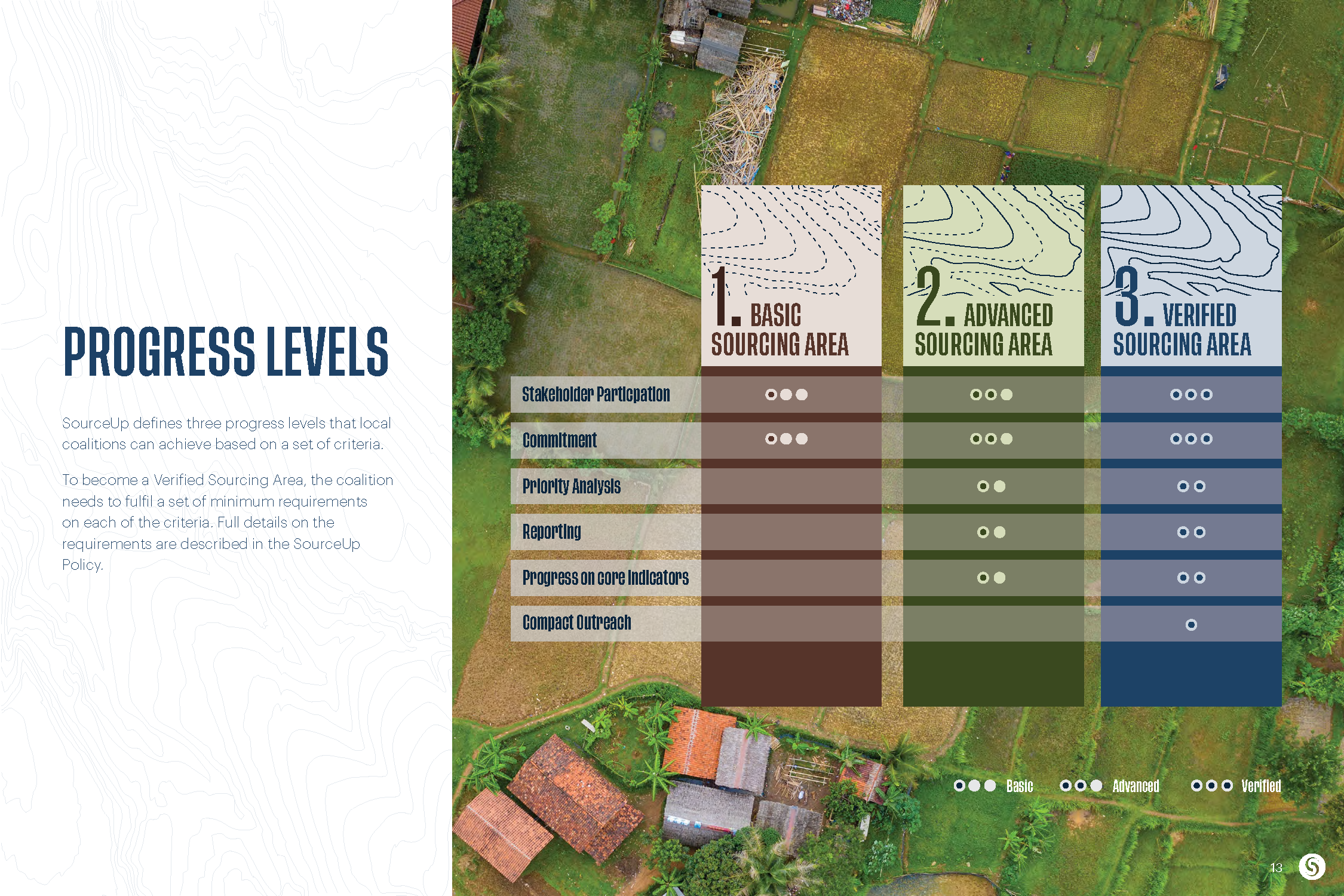
SourceUp provides step-by-step guidance to become recognised as verified sourcing areas
Companies can access relevant data from their key sourcing regions and then support projects that are relevant to their own sustainability agenda. Stakeholders in the producing region can mobilise financing and preferential sourcing to support their sustainability ambitions. Further integrations with other systems such as for procurement, traceability and investment will make a region’s sustainability efforts visible to a broad range of stakeholders through their SourceUp profile.
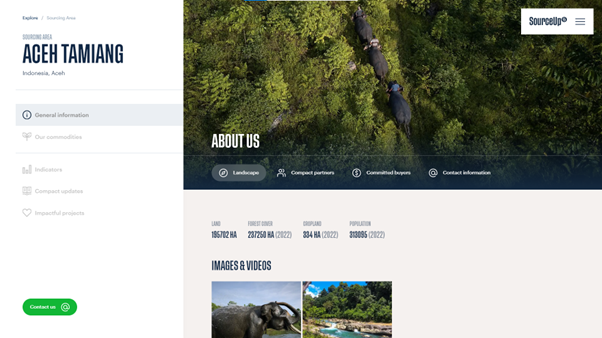
Profile page of the Aceh Tamiang initiative on SourceUp. The initiative is supported by Unilever and PepsiCo.
Trase gives a great starting point to help companies reveal the regions from which they are likely to be sourcing key forest-risk commodities. Together, SourceUp and Trase are looking at ways to integrate data streams and platforms to help buyers identify these low-risk sourcing areas which are addressing sustainability at a multi-stakeholder, landscape level.
Reducing deforestation and improving supply chain sustainability hinges on successful collaboration on the ground. SourceUp and Trase share a vision for the future where sourcing and investments are guided towards regions where there are credible collaborations which are showing progress against sustainability goals.
SourceUp is a platform for collaboration in supply chain sustainability at landscape level. For further information, please contact Willem Klaassens, SourceUp Director, at klaassens@idhtrade.org
Was this article useful?
